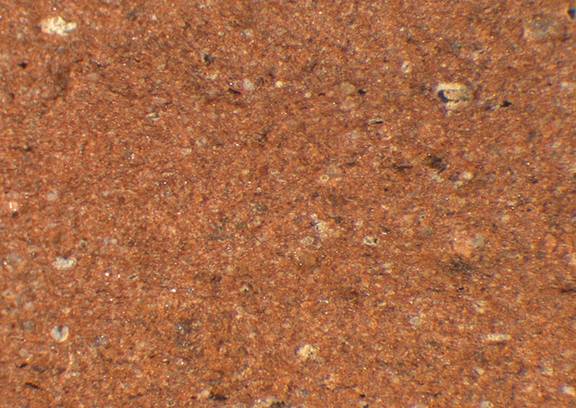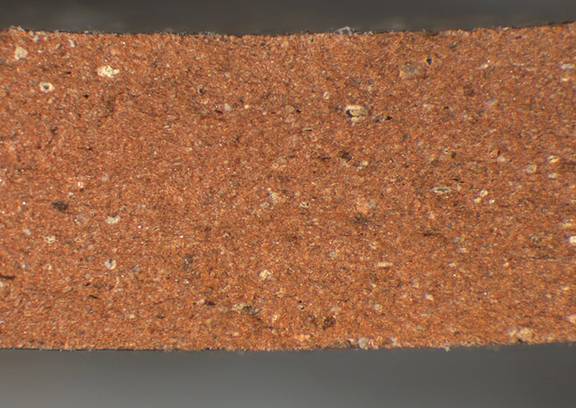

PAE-G-3, M 2/141, 40x


PAE-G-3, M 2/141, 25x


PAE-G-3, M 2/141, 16x


PAE-G-3, M 2/141, 8x
| fabric description | object data | archaeometry |
| fabric type | PAE-G-3 |
|---|---|
| ware | Glazed Wares |
| supposed site of production | Paestum |
| certainty of arguments | archaeological: quite certain |
| visual excamination of fresh break | red, fine; some fine white inclusions |
| colour of freshly broken section (munsell) | 2.5YR5/6 |
| texture of freshly broken surface | granular |
| hardness | hard |
| porosity | 7,5%; void form: chambers; void length: 0,04-0,75 |
| inclusions | 5%, length: 0,02-0,25 |
| sorting | moderately sorted sand |
Inclusions |
|
| quartz | infrequent, angular, spherical, clear, 0,04-0,2 |
| mica | frequent, angular, spherical, white, 0,04 |
| calciumcarbonate | infrequent, well rounded, spherical, white, 0,4 |
| carbonate pseudomorphoses | frequent, well rounded, very spherical, white, 0,04 |
| reddish inclusions | singular, rounded, spherical, rust coloured, 0,16 |
| black inclusions | infrequent, angular, subspherical, black, 0,08 |
Cite this page as: FACEM - http://facem.at/m-2-141

 production
production
 sampling
sampling





